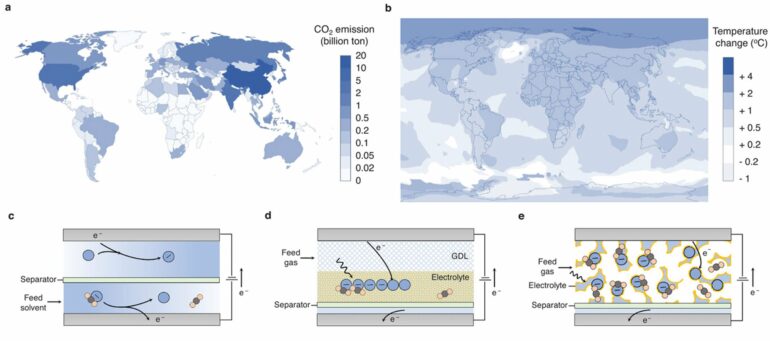In a significant advance for climate change mitigation efforts, we have developed a new material that could revolutionize carbon dioxide capture. Our study, published in Advanced Materials, introduces porous polymeric electrodes (PPEs) that dramatically enhance the efficiency of removing CO2 from low-concentration sources.
Our research team, led by Professor T. Alan Hatton, created PPEs using a novel combination of common materials: melamine foam coated with polyvinyl alcohol and infused with carbon nanotubes and quinone molecules. This innovative structure allows for vastly improved gas transport and interaction between CO2 and the capture material.
Our porous polymeric electrodes represent a significant leap forward in electrochemical carbon capture technology. By enhancing gas transport and increasing the active surface area, we’ve created a more efficient and potentially more scalable approach to capturing CO2.
Our new electrodes achieved up to 90% utilization of the active capture material, significantly outperforming previous carbon-based electrodes. In practical terms, this translates to a CO2 capture capacity of 30–80 kg per cubic meter per day, depending on CO2 concentration—a substantial improvement over existing technologies.
Notably, our PPEs maintained excellent performance over 100 capture-release cycles and demonstrated stability under humid conditions, addressing key challenges in real-world applications. The porous structure also eliminates the need for separate gas diffusion layers, allowing for more compact and potentially cost-effective capture systems.
We successfully demonstrated the material’s effectiveness in capturing CO2 from air and dilute gas streams, opening up possibilities for applications ranging from direct air capture to emissions reduction from various industrial sources.
As we race against time to mitigate climate change, innovations like this are crucial. Our PPEs could significantly enhance our ability to remove CO2 from the atmosphere and industrial emissions, contributing to global efforts to reach net-zero targets.
While our results are promising, we acknowledge that further development is needed before large-scale implementation is possible. We are now focusing on optimizing the electrodes for different operating conditions and exploring ways to scale up production.
This breakthrough comes at a critical time, as the latest IPCC reports underscore the urgent need for effective carbon capture technologies to meet global climate goals. As governments and industries worldwide seek solutions to reduce greenhouse gas emissions, innovations like our porous polymeric electrodes could play a pivotal role in shaping a more sustainable future.
This story is part of Science X Dialog, where researchers can report findings from their published research articles. Visit this page for information about ScienceX Dialog and how to participate.
More information:
Youhong Guo et al, Porous Polymeric Electrodes for Electrochemical Carbon Dioxide Capture, Advanced Materials (2024). DOI: 10.1002/adma.202407567
I am currently a Postdoctoral Associate in Department of Chemical Engineering at Massachusetts Institute of Technology, working with Prof. T. Alan Hatton. I obtained my Ph.D. from the University of Texas at Austin, advised by Prof. Guihua Yu, and received my M.S. & B.S. from the University of California San Diego. In early 2025, I will join the University of North Carolina at Chapel Hill as an Assistant Professor in Department of Applied Physical Sciences.
Citation:
Scientists develop new material for more efficient carbon capture (2024, September 6)



